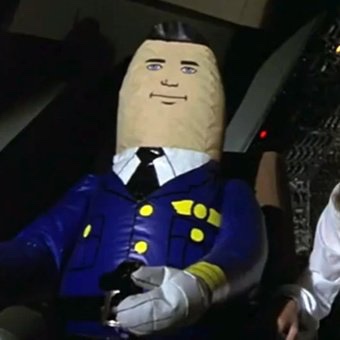Yes sir.. and I stay current, and proficient. I fly in Southern California so not as much actual as I'd like, but I do manage to squeeze in at least a couple actual hours in each year (and it's mostly when I'm cross country and outside of the local area.. yeah there's a marine later but you're in the clouds a minute or two, so that hardly counts). I'm well aware of the serious attention it deserves, and it's unnerving nature. My biggest surprise the first few times I was IMC was how the plane flies different and the turbulence is also different. It's scary the first few times, but like anything in life you learn to accept that fear and mitigate it through your training. Emotions are a *huge* part of the reason people lose their marbles in IMC. You theoretically have all the tools in front of you in the cockpit to stay right side up.. but it's the leading cause of accidents according to the NTSB. Why? Because people panic and over control the daylights out of the plane, and revert back to their human instincts of flying by the "seat of your pants"
Yes, it's scary to blindly (literally) trust your instruments, but what other option do you have? Freak out? And it's unlikely every instrument in your plane will crap itself at once, but even if it does that compass and the little ball will work, and so will your altimeter (worst case scenario you smash the altimeter window). With those 3 instruments you can stay coordinated, and straight (no turning) and level (altimeter not moving). Really, people should be referencing all of that when in IMC, not just the attitude indicator. I've had an AI precess quite bad (POS club rental plane) in IMC with the thing showing a 5-15 degree left bank straight and level. So you check against TC, DG, compass, etc.
It always will, and the moment it doesn't you have to take a step back as one may be getting over confident. I always breath a small sigh of relief coming out the top (or bottom) of a cloud
**It is certainly unnerving, but it shouldn't be deadly in an otherwise perfectly good airplane. One thing I do when I know I'm going to encounter IMC is transition to instruments before I am in the cloud.. forget what's outside and keep your eyes in the plane.. that keeps me emotionally grounded
Ice though, that scares me much more. Even in a FIKI plane ice is scary stuff
The post triggered me and what may be seen as an "aggressive" response because the answers to this problem of people losing their cool in IMC isn't to teach pilots to best-glide it into the ground or that they're guaranteed to die. Emotions, in general, need to be checked at the door when flying, I mean it's basically on the IMSAFE list. People should avoid clouds because it's illegal to enter them if they're not flying IFR. But people should still be able to fly the plane by reference to instruments only. I mean, night VFR might as well be IMC. Ever flown over the AZ desert under a high overcast layer with no moon? It is pitch, freaking, black. You're using instruments there

